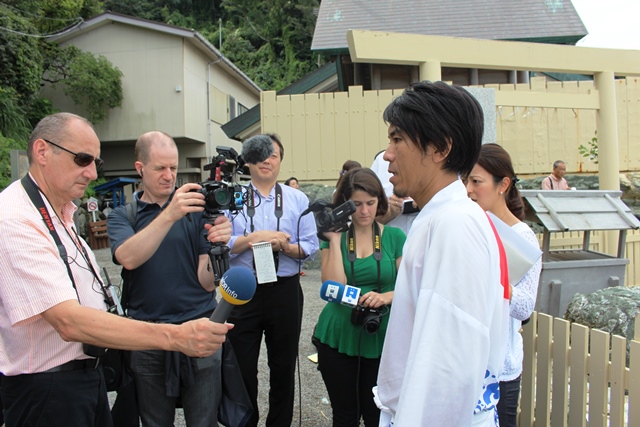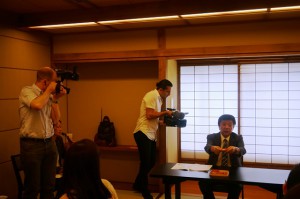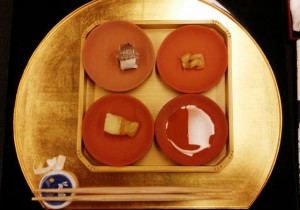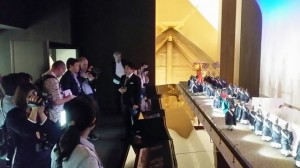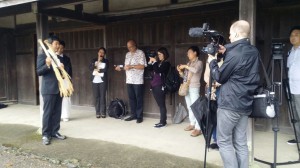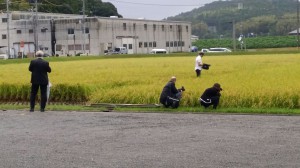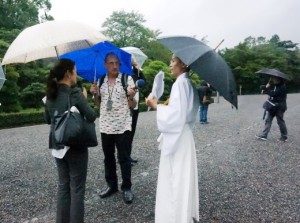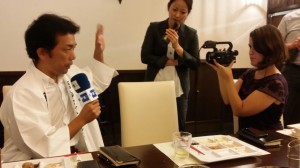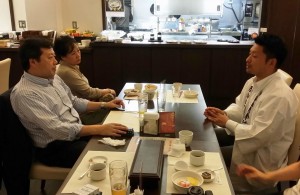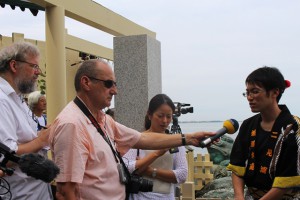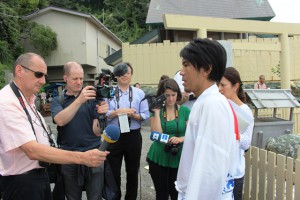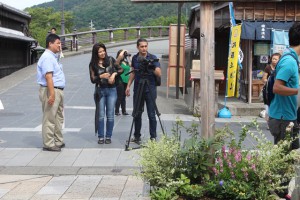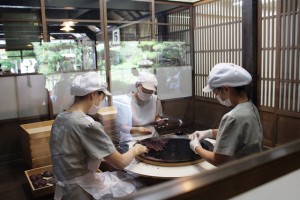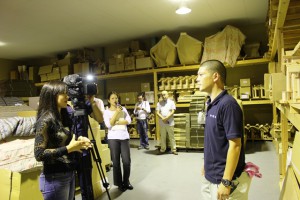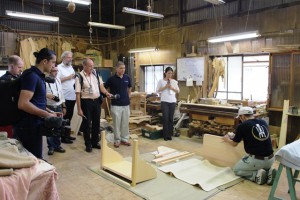実施日 : 2014年09月04日(木) - 05日(金)
Report: Ise Press Tour “The People of Ise and Jingu, the Most Sacred Site in Japan”
投稿日 : 2014年09月17日
This press tour was sponsored by Ise City, with planning support provided by the FPCJ. The tour covered Ise Jingu; the people of Ise, who are also known as “residents of the land of the gods”; and the Oshimenawahari Ceremony at Futami Okitama Shrine. Ten journalists participated in this tour, from the USA, China, South Korea, Switzerland, France, Qatar, Denmark, Germany and Spain.
----Day 1----
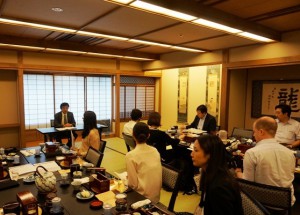 The tour first went to Daiki, a long-standing restaurant that members of the Japanese imperial family have been known to dine at. While they ate meals made from local ingredients, Professor Noboru Okada of Kogakkan University provided the journalists with an overview of Shinto and Ise Jingu.
The tour first went to Daiki, a long-standing restaurant that members of the Japanese imperial family have been known to dine at. While they ate meals made from local ingredients, Professor Noboru Okada of Kogakkan University provided the journalists with an overview of Shinto and Ise Jingu.
Professor Okada explained to the journalists how special of a place Ise is to Japanese people, occasionally referencing comments such as “It seems they believe those who do not go to Ise cannot be considered human” from the writings of Luis Fróis, a Jesuit missionary who visited Japan during the 16th century.
The professor also explained the close connection between mythology and Japanese food culture, including the relation between Japanese people and their staple food of rice, and the reason ‘itadakimasu’ is said before a meal. Afterwards, everyone ate shinsen (pictured below), food used as an offering to the kami (gods). The journalists asked questions about the relation between Ise Jingu and the emperor, and the differences between Ise Jingu and Yasukuni Shrine.
The tour then visited the Geku, where the kami of food Toyouke Omikami is enshrined. After viewing the Sengukan museum and mikagura, the tour was brought to the shogu by local volunteer guide Ms. Chieko Agata. After watching the mikagura, journalists asked questions about the role of women in Shinto and the Shinto concept of the afterlife.
Next, a priest from the Jingu Administration Office led the tour to the Jingu-shinden rice paddies, where rice is made to offer to the kami. The head planter spoke about topics such as how they ensure rice is always available to offer to the kami. The journalists took plenty of pictures of the rice paddies, which were ripe for harvest.
The tour then visited the Naiku, where Amaterasu Omikami is enshrined. Although it unfortunately rained, the journalists photographed the Uji Bridge and Isuzu River, and interviewed a priest.
That evening, the journalists chatted over dinner with two members of the Ise Jingu Service Youth Group, who participate in Jingu events and ceremonies. Mr. Ryuta Hiramatsu, who acts as an advisor for the youth group, explained ceremonies including Oshiraishimochi, Okihiki and Kannamesai. The journalists then individually interviewed the two youth group members.
----Day 2----
The tour covered the Oshimenawahari Ceremony held on September 5 at Futami Okitama Shrine. The journalists photographed and recorded the purification ritual that started the ceremony, the changing of the ropes around the Meoto Iwa rocks, and the kiyari songs sung during the ceremony. The journalists also participated along with the locals in tsunaokuri, passing the rope along to the rocks, and in mochimaki, when rice cakes are thrown to the spectators at the end of the ceremony. After the ceremony, the journalists interviewed the kiyari singers and the people who changed the ropes around the Meoto Iwa rocks, hearing in detail about the tools used for the ceremony and the meaning behind each step.
In the afternoon, the tour visited Oharai-machi, an area full of restaurants and souvenir stores, and Okage-yokocho, which opened in a corner of Oharai-machi in 1993 as part of efforts to improve the town. First there was an explanation from an employee of Isefuku, the company that manages Okage-yokocho, who mentioned how the number of annual visitors recovered from a low of around 200,000 annually up to 6.5 million after opening Okage-yokocho. The journalists then went around the town on their own, taking photos and looking at the souvenirs. The tour also visited the main branch of Akafuku, a Japanese confection maker, for sweets and green tea.
The tour ended with a visit to Ise Miyachu, a company that makes and sells religious paraphernalia such as kamidana, small altars shaped like shrines. Factory chief Mr. Yosuke Kawanishi took the tour to see the materials used in the factory, a storeroom with kamidana in a variety of sizes, and craftsmen at work. The journalists asked questions about the price of kamidana and what models were popular, the percentage of Ise residents who owned kamidana, and what Mr. Kawanishi felt was fulfilling or difficult about his work. Mr. Kawanishi spoke about how the decline in both the Kiso hinoki cypress used for materials and in the number of craftsmen were major issues for continuing the business, and that increasing the number of locals who like Ise was important to solve these issues.

